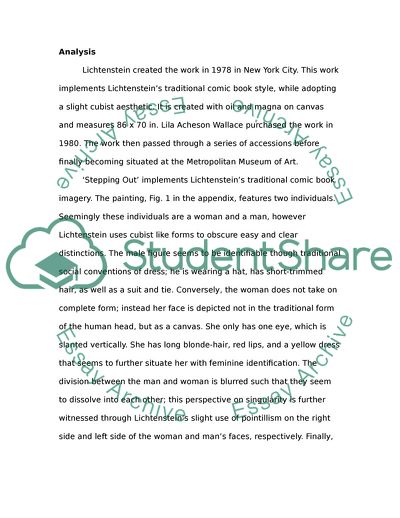Cite this document
(Roy Lichtenstein: Stepping Out Essay Example | Topics and Well Written Essays - 1500 words, n.d.)
Roy Lichtenstein: Stepping Out Essay Example | Topics and Well Written Essays - 1500 words. https://studentshare.org/visual-arts-film-studies/1773594-roy-lichtenstein-stepping-out
Roy Lichtenstein: Stepping Out Essay Example | Topics and Well Written Essays - 1500 words. https://studentshare.org/visual-arts-film-studies/1773594-roy-lichtenstein-stepping-out
(Roy Lichtenstein: Stepping Out Essay Example | Topics and Well Written Essays - 1500 Words)
Roy Lichtenstein: Stepping Out Essay Example | Topics and Well Written Essays - 1500 Words. https://studentshare.org/visual-arts-film-studies/1773594-roy-lichtenstein-stepping-out.
Roy Lichtenstein: Stepping Out Essay Example | Topics and Well Written Essays - 1500 Words. https://studentshare.org/visual-arts-film-studies/1773594-roy-lichtenstein-stepping-out.
“Roy Lichtenstein: Stepping Out Essay Example | Topics and Well Written Essays - 1500 Words”. https://studentshare.org/visual-arts-film-studies/1773594-roy-lichtenstein-stepping-out.


